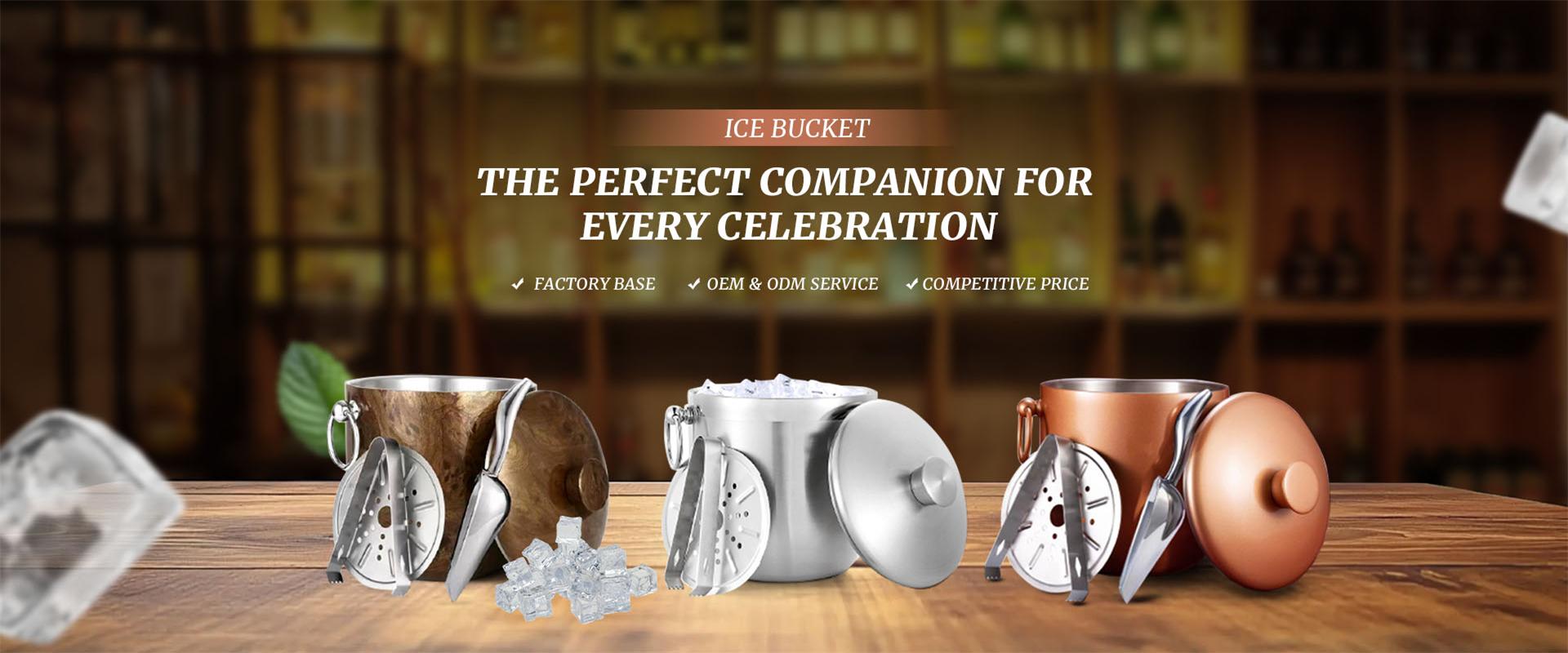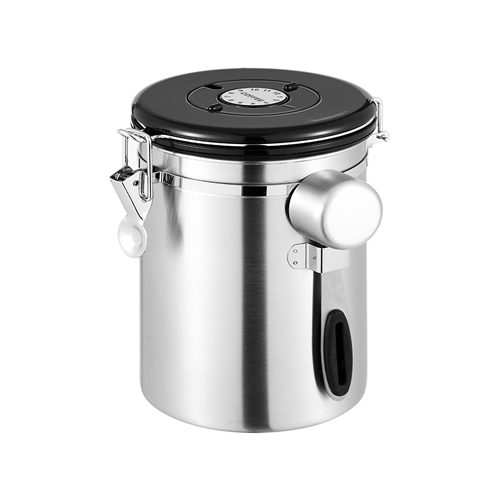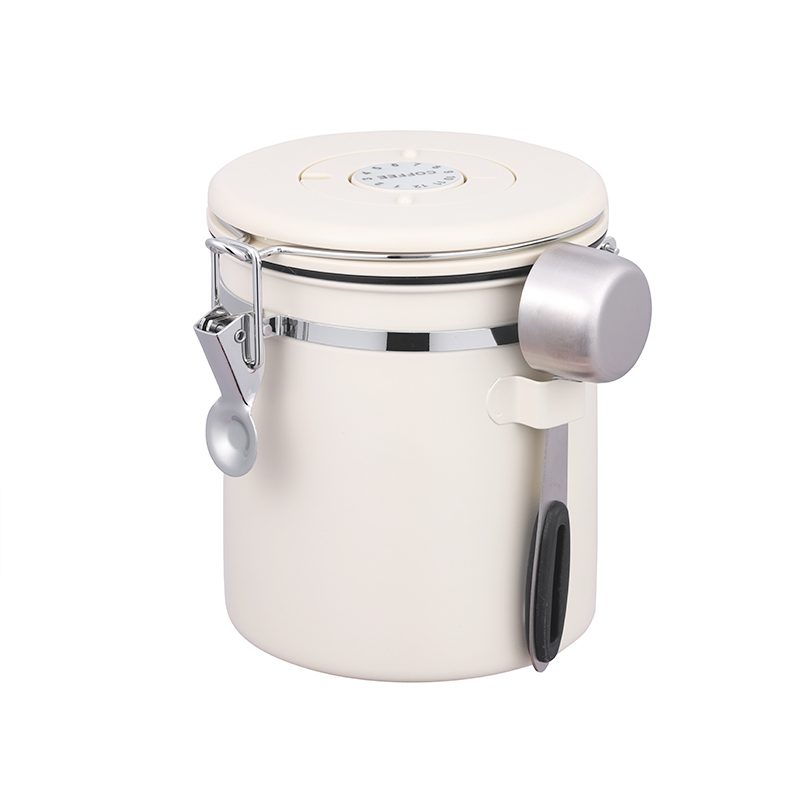Choosing The Right Coffee Bean Container for Your Business: Opaque And Airtight Solutions Compared
In the coffee business, preserving the freshness and quality of coffee beans is paramount. Choosing the appropriate coffee bean container is a crucial step for businesses aiming to deliver exceptional coffee experiences to their customers. Among various options, opaque containers and airtight containers stand out as popular choices. This article delves into the comparison between opaque and airtight coffee bean containers to help you make an informed decision for your business.
Understanding the Importance of Coffee Bean Storage
Coffee beans are sensitive to environmental factors such as light, oxygen, heat, and moisture. Exposure to these elements can lead to the deterioration of the beans, altering their flavor profile and aroma. Once coffee beans are roasted, they undergo a degassing process where carbon dioxide is released. This process continues for a few days to a couple of weeks. However, during this time, the beans are also vulnerable to the negative effects of the surrounding environment. Proper storage is essential to maintain the optimal flavor and quality of the beans until they are brewed.
Opaque Coffee Bean Containers: Shielding from Light
Opaque containers can block light. Light exposure can cause the coffee beans to heat up, accelerating the oxidation process and leading to the breakdown of the compounds responsible for the coffee's flavor. Opaque containers serve as a protective barrier against light infiltration, helping to preserve the beans' freshness for a longer period.
A classic example of an opaque container is the SENGHO Coffee Bean Storage Container. Its ceramic - like exterior effectively prevents light from reaching the beans inside. The container also features a stainless steel handle and clasp mechanism, which not only adds to its durability but also enhances its functionality. The SENGHO container's design includes a pressure - relief valve, allowing the release of carbon dioxide produced during the degassing process while preventing oxygen from entering. This feature is particularly beneficial for storing freshly roasted beans.
Opaque containers are ideal for businesses that want to minimize the risk of light - induced degradation of their coffee beans. They are suitable for storing larger quantities of beans and can be placed in a cool, dry place away from direct sunlight. However, it's important to note that while opaque containers address the issue of light exposure, they may not necessarily provide a completely airtight seal, which brings us to the discussion of airtight containers.
Airtight Coffee Bean Containers: Sealing in Freshness
Airtight containers focus on creating a barrier against air, specifically oxygen. Oxygen is a key factor in the oxidation of coffee beans, which can result in stale - tasting coffee. Airtight containers work by minimizing the contact between the beans and the surrounding air. When properly sealed, these containers can significantly slow down the oxidation process, helping to maintain the beans' freshness and flavor.
The SENGHO Coffee Bean Storage Container also demonstrates excellent airtight properties. Its lid and sealing ring are designed to create a tight seal when closed. The sealing ring plays a vital role in maintaining the airtightness of the container. By keeping oxygen at bay, airtight containers like this one help preserve the delicate essential oils and aromatic compounds in the coffee beans.
Airtight containers are perfect for businesses that want to maintain the freshness of their coffee beans for an extended period. They are especially useful for storing smaller quantities of beans that are frequently accessed, as the airtight seal can be easily maintained. However, it's worth mentioning that some airtight containers may not be completely opaque, which means they might not provide the same level of light protection as dedicated opaque containers.
Comparing Opaque and Airtight Containers
When comparing opaque and airtight coffee bean containers, it's important to consider the specific needs of your business. Opaque containers offer superior protection against light, which is crucial for preventing the heat - generating effects of light exposure on coffee beans. They are generally more robust and can accommodate larger quantities of beans. On the other hand, airtight containers excel at maintaining a barrier against oxygen, which is vital for preventing oxidation and preserving the beans' flavor. Some airtight containers may also incorporate features like one - way valves to allow carbon dioxide release while keeping oxygen out, similar to the SENGHO's container.
In terms of aesthetics and functionality, both types of containers have their advantages. Opaque containers often have a more traditional and elegant appearance, making them suitable for display in coffee shops or retail settings. Airtight containers can come in various designs, some of which may prioritize space - saving features or ease of use. It's also worth considering the material of the container. Stainless steel and ceramic are common materials for both opaque and airtight containers, offering durability and resistance to temperature fluctuations.
Making the Right Choice for Your Business
The choice between opaque and airtight coffee bean containers depends on several factors, including the volume of beans you store, the frequency of access, the storage location, and your specific quality preservation goals. For businesses that roast their own beans on - site or receive freshly roasted beans regularly, a combination of both opaque and airtight features may be ideal. Containers like the SENGHO Coffee Bean Storage Container provide a balance by offering a certain degree of opacity along with airtight capabilities.
If your business focuses on maintaining the absolute freshest taste by minimizing oxygen exposure, an airtight container with a one - way valve system could be the best choice. Conversely, if your primary concern is protecting large quantities of beans from light damage over extended storage periods, an opaque container with a good sealing mechanism would serve you well.
In conclusion, whether you choose an opaque container, an airtight container, or a combination of both, the key is to prioritize the preservation of your coffee beans' quality. By understanding the unique benefits of each type of container and aligning them with your business's specific requirements, you can ensure that the coffee beans served to your customers consistently meet the highest standards of freshness and flavor. If you want to know more about this Coffee Bean Container, you may wish to click on our product details or consult us directly, we hope to receive your consultation!





